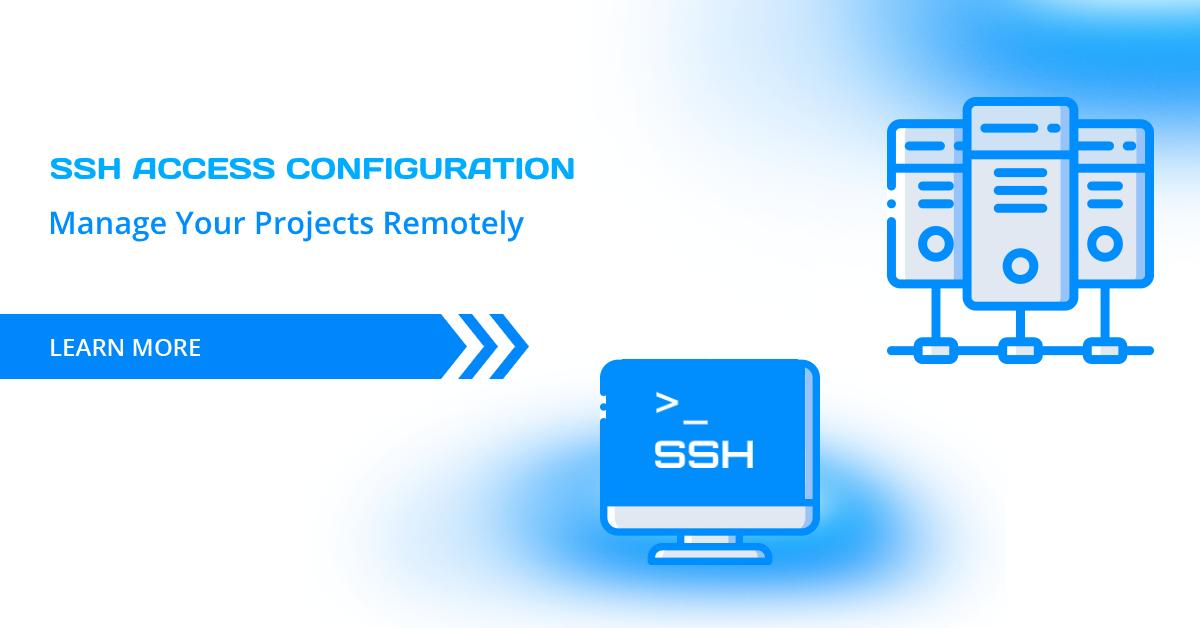Ultimate Guide: Secure Raspberry Pi IoT With P2P SSH!
Have you ever wondered how to keep your data safe while managing your IoT devices from afar? The answer lies in mastering the art of securely connecting remote IoT devices using P2P SSH on a Raspberry Pi.
In today's fast-paced tech landscape, securely connecting remote IoT P2P SSH Raspberry Pi free is not just a convenience, it's a necessity. Whether you're a hobbyist tinkering with home automation or a professional building sophisticated IoT systems, the ability to remotely manage your devices securely is paramount. This article delves into the world of secure remote access, providing a comprehensive guide to setting up and optimizing your Raspberry Pi for IoT management, focusing on the critical aspects of security and accessibility.
| Topic | Description |
|---|---|
| Concept | Securely Connecting Remote IoT Devices via P2P SSH on Raspberry Pi |
| Components | Raspberry Pi, IoT Devices, SSH, P2P Solution |
| Benefits | Secure Remote Access, Cost-Effective, Enhanced Control |
| Use Cases | Home Automation, Industrial Monitoring, Remote Sensing |
| Further Reading | Raspberry Pi Official Website |
The rise of the Internet of Things (IoT) has brought about an unprecedented level of connectivity, with billions of devices communicating and sharing data. Raspberry Pi, a versatile and affordable single-board computer, has become a popular choice for IoT projects due to its flexibility and ease of use. However, as the demand for remote device management grows, so does the need for robust security measures. This guide will walk you through the steps and best practices to securely connect remote IoT devices using P2P SSH on a Raspberry Pi, ensuring your network remains safe and efficient. Think of it as building a digital fortress around your IoT ecosystem.
This isn't just another tech article; it's a deep dive into the practical aspects of securing your IoT infrastructure. You'll learn how to leverage SSH, a secure network protocol, to enhance the Raspberry Pi's capabilities, enabling secure remote access, control, and management of your IoT devices from anywhere in the world. Forget about complicated setups and expensive solutions; this guide focuses on free and effective methods to achieve seamless remote IoT connectivity. By the end of this guide, you’ll know everything you need to set up a secure remote IoT P2P connection using a Raspberry Pi, all for free.
Mastering the management of Raspberry Pi remotely is crucial, and finding the right remote IoT management platform can make all the difference. Here’s a quick overview of what we’ll cover: Understanding IoT and Raspberry Pi, Accessing Raspberry Pi with a web-based SSH client in your browser. With the web console, you can connect your Raspberry Pi directly from your PC browser or mobile device. The web console is a standard terminal emulator for the X Window System.
If you're diving into the world of IoT (Internet of Things) and want to securely connect your Raspberry Pi to a remote network using P2P SSH, you're in the right place. Securely connect your Raspberry Pi IoT devices remotely, using SSH over a free P2P solution! Learn how to implement SSH for secure access and explore free P2P options for seamless remote IoT connectivity.
This guide will walk you through everything you need to know about setting up, optimizing, and securing remote access for IoT devices and Raspberry Pi using SSH without a dedicated monitor or keyboard. It's a practical necessity in today's interconnected world. Whether you're working on home automation projects or building sophisticated IoT systems, mastering the art of securely connecting a Raspberry Pi to a Mac is an essential step.
We will explore the best methods to securely connect remote IoT devices using P2P SSH on Raspberry Pi. Comprehensive guide to remote IoT platform SSH Raspberry Pi download free. A comprehensive guide to setting up remote IoT monitoring with SSH on Raspberry Pi, Ubuntu, and Windows. Mastering remote IoT monitoring SSH download Raspberry Pi. Let's face it, setting up a remote connection for your IoT devices isn't just about convenience—it’s about keeping your data safe in an increasingly interconnected world.
Securely connect remote IoT P2P SSH Raspberry Pi free is one solution that addresses these challenges. Connecting remote IoT devices securely through a P2P SSH setup on a Raspberry Pi is a powerful solution for modern technology enthusiasts. As more devices become interconnected, ensuring secure communication is paramount. As more devices become connected, ensuring secure communication between IoT devices, especially via SSH (Secure Shell) on platforms like Raspberry Pi, is crucial. In today's interconnected world, securely connecting remote IoT P2P SSH Raspberry Pi free is a crucial skill for anyone working with embedded systems and IoT devices.
Let's break down the key components involved in establishing a secure remote connection. First, we have the Raspberry Pi, a compact and versatile computer that acts as the central hub for your IoT devices. Its low cost and extensive community support make it an ideal choice for various projects. Next, we have the IoT devices themselves, which can range from simple sensors to complex actuators, all communicating with the Raspberry Pi. Then there's SSH (Secure Shell), a cryptographic network protocol that provides a secure channel for remote access. It encrypts all traffic between the client and the server, preventing eavesdropping and tampering.
But how do we achieve remote access without exposing our Raspberry Pi to the open internet? That's where P2P (peer-to-peer) solutions come in. P2P networking allows devices to connect directly to each other without relying on a central server. This eliminates the need for port forwarding or dynamic DNS services, simplifying the setup process and enhancing security. By combining SSH with a P2P solution, we can create a secure and reliable connection to our Raspberry Pi from anywhere in the world.
Now, let's dive into the practical steps of setting up a secure remote connection. First, ensure your Raspberry Pi is running the latest version of the operating system. This ensures you have the latest security patches and software updates. Next, enable SSH on your Raspberry Pi. This can be done through the Raspberry Pi Configuration tool or via the command line. Once SSH is enabled, you'll need to configure a P2P solution. Several options are available, including ZeroTier, Tailscale, and Ngrok. Each of these solutions offers a free tier that's suitable for most personal projects.
After installing and configuring your chosen P2P solution, you'll need to generate SSH keys. SSH keys provide a more secure alternative to password-based authentication. They consist of a private key, which is stored on your local machine, and a public key, which is placed on the Raspberry Pi. When you connect to the Raspberry Pi using SSH, the client uses the private key to prove its identity, without ever transmitting a password over the network. This significantly reduces the risk of brute-force attacks and other password-related vulnerabilities.
To generate SSH keys, use the `ssh-keygen` command on your local machine. This command will prompt you to enter a passphrase for your key. It's crucial to choose a strong passphrase to protect your private key. Once the keys are generated, copy the public key to your Raspberry Pi using the `ssh-copy-id` command. This command will automatically add the public key to the `authorized_keys` file on the Raspberry Pi, allowing you to connect without entering a password.
With SSH keys in place, you can now connect to your Raspberry Pi remotely using the SSH command. Specify the username, hostname, and port number of your Raspberry Pi, along with the `-i` option to specify the path to your private key. For example: `ssh pi@your_raspberry_pi_hostname -p your_port_number -i ~/.ssh/your_private_key`. If everything is configured correctly, you should be able to connect to your Raspberry Pi without being prompted for a password.
Now that you have a secure remote connection established, let's explore some best practices for maintaining security. First, always keep your Raspberry Pi's operating system and software up to date. Regularly install security patches and updates to protect against newly discovered vulnerabilities. Second, use a strong and unique password for your Raspberry Pi's user accounts. Avoid using default passwords or common phrases that can be easily guessed.
Third, disable password-based authentication for SSH. This eliminates the risk of password-related attacks. Instead, rely on SSH keys for authentication. Fourth, configure a firewall on your Raspberry Pi to restrict access to only necessary ports. This reduces the attack surface of your device and prevents unauthorized access. Fifth, monitor your Raspberry Pi's logs for suspicious activity. Regularly review the logs to identify and respond to potential security incidents.
Sixth, consider using a VPN (Virtual Private Network) to encrypt all traffic between your local machine and your Raspberry Pi. A VPN creates a secure tunnel that protects your data from eavesdropping and tampering. Seventh, implement multi-factor authentication (MFA) for SSH. MFA adds an extra layer of security by requiring users to provide two or more authentication factors, such as a password and a one-time code generated by a mobile app.
Eighth, regularly back up your Raspberry Pi's data. In the event of a security breach or hardware failure, you can restore your data from a backup. Ninth, educate yourself about common security threats and vulnerabilities. Stay up-to-date on the latest security news and trends to protect your IoT infrastructure. Tenth, test your security measures regularly. Conduct penetration tests and vulnerability assessments to identify and address weaknesses in your security posture.
Beyond the basic setup, there are several advanced techniques you can use to further enhance the security of your remote IoT connections. One such technique is port knocking. Port knocking involves sending a sequence of packets to specific ports on your Raspberry Pi. Only when the correct sequence is received will the SSH port be opened. This adds an extra layer of obscurity and prevents attackers from scanning your Raspberry Pi for open ports.
Another advanced technique is fail2ban. Fail2ban is a daemon that automatically bans IP addresses that exhibit malicious behavior, such as repeated failed login attempts. Fail2ban monitors your Raspberry Pi's logs and automatically updates the firewall to block offending IP addresses. This can help prevent brute-force attacks and other malicious activities.
You can also use intrusion detection systems (IDS) to monitor your Raspberry Pi for suspicious activity. IDS tools analyze network traffic and system logs for signs of intrusion. When suspicious activity is detected, the IDS will alert you, allowing you to respond quickly and mitigate the threat. Several open-source IDS tools are available for Raspberry Pi, such as Snort and Suricata.
In conclusion, securely connecting remote IoT devices using P2P SSH on a Raspberry Pi is a crucial skill for anyone working with embedded systems and IoT devices. By following the steps and best practices outlined in this guide, you can create a secure and reliable remote connection to your Raspberry Pi from anywhere in the world. Remember to always prioritize security and stay up-to-date on the latest security threats and vulnerabilities.
From home automation to industrial monitoring, the possibilities are endless when you have a secure and reliable remote connection to your IoT devices. So, embrace the power of P2P SSH on Raspberry Pi and unlock the full potential of your IoT ecosystem. The ability to securely connect remote IoT P2P SSH Raspberry Pi free opens up a world of possibilities for innovation and creativity. Whether you're building a smart home, monitoring environmental conditions, or controlling industrial processes, the power of remote access is at your fingertips.

Best Practices To Securely Connect Remote IoT P2P SSH On Raspberry Pi

Best Ways To Securely Connect Remote IoT P2P SSH On Raspberry Pi

Securely Connect Remote IoT P2P Raspberry Pi Free Download The